Scoops of Coffee: How Many to Use for the Perfect Cup
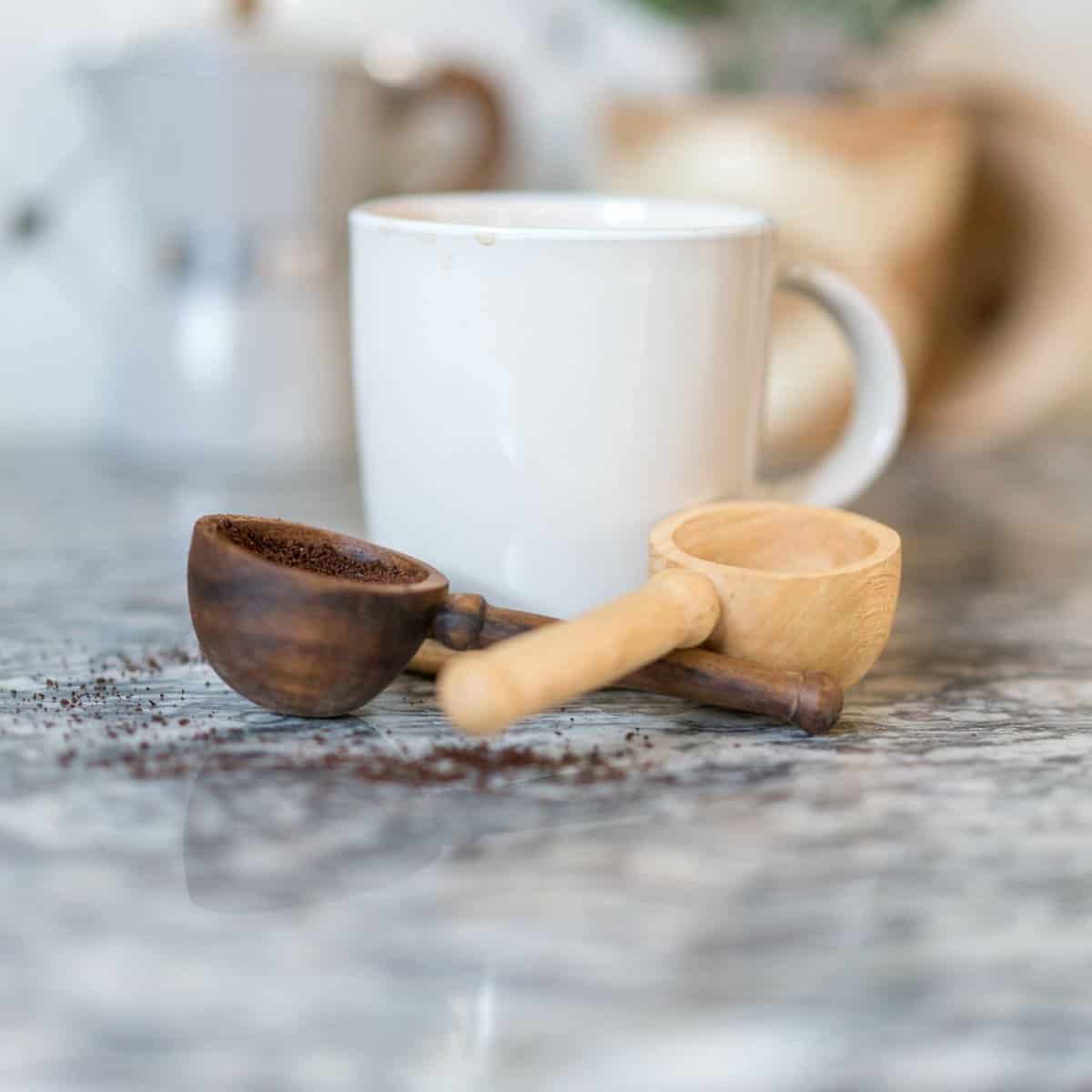
If you’re a coffee lover, you know that the perfect cup of coffee starts with the right amount of coffee grounds. But how many scoops of coffee do you actually need for a good cup of joe? We’ve researched the topic and compiled the answers to help you make the perfect cup of coffee every time.

The general recommendation for making a cup of coffee is to use one scoop of coffee grounds per cup of coffee. However, one cup of coffee isn’t the same thing as a US Imperial 8 ounce cup. In fact, the size of a cup can vary depending on the country and even the individual. So, how do you know how much coffee to use? We’ll explore the answer to this question and more in this article.
Understanding Coffee Measurements

As coffee lovers, we all want to make sure we are using the right amount of coffee to get the perfect cup every time. Understanding coffee measurements is essential to achieving that perfect cup. Let’s take a look at some common measurements and how to use them correctly.
Standard Coffee Scoop
A standard coffee scoop is equivalent to two tablespoons. This means that one scoop of coffee grounds is equal to two tablespoons of coffee. While some coffee scoops may be larger or smaller, most coffee scoops follow this standard size. It is important to note that measuring coffee by volume, rather than by weight, can sometimes lead to inconsistencies in the final product.
Tablespoon
A tablespoon is a measurement of volume that is equivalent to three teaspoons or 15 milliliters. When measuring coffee with a tablespoon, it is important to use a level tablespoon to ensure accuracy.
Measuring Cup
A measuring cup is a kitchen tool used to measure liquid or dry ingredients. When measuring coffee with a measuring cup, it is important to use a liquid measuring cup for accuracy. One cup of coffee is equivalent to eight fluid ounces or 240 milliliters.
Grams of Coffee
Measuring coffee by weight, rather than by volume, can provide a more accurate measurement. One standard scoop of coffee, or two tablespoons, is equivalent to approximately 10 grams of coffee.
Measuring Spoon
A measuring spoon is a kitchen tool used to measure small amounts of dry or liquid ingredients. When measuring coffee with a measuring spoon, it is important to use a level spoon for accuracy. One teaspoon of coffee is equivalent to approximately 5 grams of coffee.
In summary, understanding coffee measurements is essential to achieving that perfect cup of coffee. Whether you are using a coffee scoop, tablespoon, measuring cup, or measuring spoon, it is important to use the correct measurement and ensure accuracy.
The Importance of Coffee Grind Size

As coffee enthusiasts, we know that the perfect cup of coffee is all about getting the right balance of flavors. One of the most critical factors in achieving this balance is the grind size of the coffee beans. The grind size directly affects the surface area of the coffee grounds, which in turn affects the extraction rate and the flavor of the coffee.
When we talk about coffee grind size, we’re referring to the consistency of the ground coffee. Different brewing methods require different grind sizes to achieve the perfect cup of coffee. For example, French press coffee requires a coarse grind, while espresso requires a fine grind.
If the grind size is too coarse, the water will pass through the coffee too quickly, resulting in a weak and watery cup of coffee. On the other hand, if the grind size is too fine, the water will pass through the coffee too slowly, resulting in an over-extracted and bitter cup of coffee.
It’s essential to get the grind size right to achieve the perfect cup of coffee. The consistency of the grind is also crucial. If the grind is inconsistent, the coffee will extract unevenly, resulting in a cup of coffee with an unbalanced flavor profile.
The design of the coffee grinder also plays a significant role in achieving the perfect grind size and consistency. Burr grinders are generally considered to be the best type of coffee grinder as they produce a consistent grind size and minimize heat transfer, which can affect the flavor of the coffee.
In summary, the grind size and consistency of the coffee grounds are critical factors in achieving the perfect cup of coffee. It’s essential to use the correct grind size for the brewing method and to ensure that the grind is consistent. Using a high-quality coffee grinder, such as a burr grinder, can help achieve the perfect grind size and consistency.
Selecting the Right Coffee Scoop
When it comes to brewing coffee, selecting the right coffee scoop is crucial for achieving the perfect cup. The scoop-to-cup ratio is important to get right, as it affects the strength and flavor of your brew. In this section, we’ll cover everything you need to know about selecting the right coffee scoop.
Consider the Size
The size of your coffee scoop is important, as it determines the amount of coffee grounds you use per cup. The most common standard coffee scoop measures around 10 grams of coffee. However, different coffee scoops may measure different amounts. It’s important to check the size of your scoop before using it to ensure you’re using the correct amount of coffee grounds.
Check for a Standard Scoop
Using a standard coffee scoop can make measuring coffee grounds much easier. A standard coffee scoop typically holds around 2 tablespoons of ground coffee. The length of a standard coffee scoop is typically around 5-6 inches, with a diameter of approximately 1.5 inches. The depth of the scoop’s bowl is usually around 0.75 inches. Using a standard scoop can help you achieve consistent results each time you brew.
Store Your Scoop Properly
Storing your coffee scoop properly can help keep it clean and prevent contamination. We recommend storing your coffee scoop in a clean, dry location. You can also store it in an airtight container to prevent dust and other particles from settling on it.
Clean Your Scoop Regularly
Cleaning your coffee scoop regularly is important to prevent any buildup of coffee oils or residue. We recommend washing your scoop with warm, soapy water after each use. You can also run it through the dishwasher if it’s dishwasher safe. Make sure to dry your scoop thoroughly before storing it.
By considering the size, checking for a standard scoop, storing your scoop properly, and cleaning it regularly, you can select the right coffee scoop and achieve the perfect cup of coffee every time.
The Art of Brewing Coffee
Brewing coffee is both an art and a science. There are various brewing methods available such as the French press, drip coffee, pour-over coffee, and espresso. Each brewing method requires a specific coffee-to-water ratio and brewing time to achieve the perfect cup of coffee.
When brewing coffee using a drip coffee maker or a drip brewer, it is important to use the correct amount of coffee grounds. The general recommendation is to use one to two tablespoons of coffee grounds per six ounces of water. However, this can vary depending on personal preference. A good rule of thumb is to start with one tablespoon of coffee grounds per six ounces of water and adjust accordingly.
For espresso machines, the coffee-to-water ratio is different. The ideal ratio is one part coffee to two parts water. This means that for every 1 gram of coffee, you should use 2 grams of water. The brewing time for espresso is also much shorter than other brewing methods, usually around 20-30 seconds.
When brewing coffee using a French press or a coffee pot, the brewing time is longer. The ideal brewing time for a French press is around 4 minutes, while a coffee pot can take up to 10 minutes. It is important to use the correct amount of coffee grounds to achieve the desired strength and flavor.
In addition to the brewing method and coffee-to-water ratio, the quality of the coffee beans also plays a crucial role in the taste of the coffee. It is recommended to use freshly roasted coffee beans and grind them just before brewing to ensure maximum flavor and freshness.
Overall, brewing coffee is a skill that requires practice and experimentation to achieve the perfect cup. By using the correct brewing method, coffee-to-water ratio, and brewing time, you can enjoy a delicious and satisfying cup of coffee every time.
Perfecting the Coffee-to-Water Ratio
When it comes to making the perfect cup of coffee, the coffee-to-water ratio is crucial. This ratio determines the strength and taste of your coffee, so getting it right is essential.
There are several ways to measure the coffee-to-water ratio. One common method is to use one scoop of coffee grounds for every six ounces of water. However, this ratio can vary depending on your personal preference and the type of coffee you are using.
Some people talk about a “golden ratio” or an ideal number that makes the perfect cup of coffee. While that would make everything easier, it is also a little too simplistic. The perfect ratio depends on several factors, including the type of coffee beans, the brewing method, and your personal taste.
To find the perfect coffee-to-water ratio, start with a 1:15 coffee-to-water ratio. This means using one part coffee to 15 parts water. For example, if you are making eight cups of coffee, you would use 1/2 cup of coffee and 7 1/2 cups of water.
If your coffee is too weak, increase the amount of coffee grounds. If it’s too strong, decrease the amount of coffee grounds. You can also adjust the ratio depending on the brewing method. For example, a French press requires a coarser grind and a longer brewing time, so you may need to use more coffee grounds.
In summary, the perfect coffee-to-water ratio is subjective and depends on several factors. Start with a 1:15 coffee-to-water ratio and adjust it to your personal taste. With a little experimentation, you can find the perfect ratio for your perfect cup of coffee.
Adjusting Coffee Strength to Personal Preference
When it comes to brewing the perfect cup of coffee, adjusting the coffee strength to personal preference is key. Some people prefer a stronger cup of coffee, while others prefer a milder cup. The strength of your coffee can be adjusted by changing the ratio of coffee to water or by changing the number of scoops of coffee used per cup.
When using a standard coffee scoop, which is equivalent to approximately 2 tablespoons, a good rule of thumb is to use 1 scoop of coffee for every 6 ounces of water. However, this ratio can be adjusted based on personal preference. For a stronger cup of coffee, use more coffee per cup, and for a weaker cup, use less coffee per cup.
It’s important to keep in mind that the strength of your coffee can also be affected by the type of coffee you use, the grind of the coffee, and the brewing method you choose. For example, a French press may require a higher ratio of coffee to water, while a drip coffee maker may require a lower ratio. Experimenting with different coffee measurements and brewing methods can help you find the perfect balance for your personal taste.
If your coffee is too bitter or too strong, try using fewer scoops of coffee or using a milder coffee blend. On the other hand, if your coffee is too weak, try using more scoops of coffee or using a stronger coffee blend.
In summary, adjusting the coffee strength to personal preference is an important factor in brewing the perfect cup of coffee. Experiment with different ratios of coffee to water and different brewing methods to find the perfect balance for your taste. Remember that the strength of your coffee can also be affected by the type of coffee you use, the grind of the coffee, and the brewing method you choose.
Exploring Different Flavors
As coffee enthusiasts, we know that there is a lot more to coffee than just caffeine. The flavor profile of coffee can vary depending on many factors, including the origin of the beans, the roast level, and the brewing method. In this section, we will explore different flavors that coffee can have and how they can be achieved.
Specialty Coffee
Specialty coffee is a term used to describe high-quality coffee that has been grown and processed with care. Specialty coffee beans are typically grown at high altitudes, where they mature more slowly and develop more complex flavors. These beans are also usually hand-picked and carefully processed to ensure that only the best beans make it to the roaster. Specialty coffee can have a wide range of flavors, from fruity and floral to nutty and chocolatey.
Flavored Coffee
Flavored coffee is coffee that has been infused with additional flavors, such as vanilla, hazelnut, or caramel. While some coffee purists may turn their noses up at flavored coffee, it can be a great way to add some variety to your coffee routine. Flavored coffee can be achieved in a few different ways. Some coffee roasters will add flavorings to the beans before roasting, while others will infuse the coffee with flavor after it has been brewed.
Sour Flavors
Sour flavors in coffee are often associated with under-extraction. Under-extraction can occur when coffee is not brewed for long enough or when the water temperature is too low. Sour flavors can also be caused by using coffee beans that are too fresh. Fresh coffee beans can release carbon dioxide during the brewing process, which can result in a sour taste.
Flavor Profile
The flavor profile of coffee can vary depending on many factors, including the origin of the beans, the roast level, and the brewing method. Some coffee beans are known for their specific flavor profiles. For example, Ethiopian coffee is often described as having a fruity, floral flavor, while Colombian coffee is known for its nutty, chocolatey notes.
In conclusion, exploring different flavors in coffee can be a fun and exciting journey. Whether you prefer specialty coffee or flavored coffee, there are many different flavors to discover. By paying attention to the factors that affect coffee flavor, such as origin, roast level, and brewing method, you can start to develop a deeper appreciation for the complexity of coffee.
The Role of Accurate Measurements
As coffee lovers, we know that the perfect cup of coffee requires precise measurements of coffee grounds and water. The coffee-to-water ratio plays a significant role in extracting optimal flavors from your coffee beans. That’s why accurate measurements are crucial for a well-balanced cup of coffee.
One of the best ways to achieve accurate measurements is by using a kitchen scale or a coffee scale. These scales can measure the exact weight of coffee grounds and water, ensuring that you get the perfect ratio every time. A digital scale is even better since it can provide more precise measurements.
Using a scoop to measure coffee grounds is a common practice. However, the size of the scoop and the level of coffee grounds can vary, leading to inconsistent results. That’s why it’s essential to use accurate measurements to get the perfect cup of coffee every time.
Accurate measurements not only ensure consistency in taste but also help you save money by avoiding waste. Measuring the exact amount of coffee grounds you need for your cup of coffee can help you avoid wasting coffee and money.
In summary, accurate measurements are crucial for the perfect cup of coffee. Using a kitchen scale, coffee scale, or digital scale can help you achieve consistent results. By measuring the exact amount of coffee grounds and water, you can ensure that you get the perfect coffee-to-water ratio every time.
Understanding Serving Sizes
When it comes to brewing coffee, understanding serving sizes is crucial. A serving size is the amount of coffee used to make a single cup. The standard cup of coffee is typically 8 ounces, but cup sizes can vary depending on the type of coffee maker you use.
To ensure that you are using the correct amount of coffee for your desired cup size, it is important to know how many tablespoons of coffee per cup are recommended. The general recommendation for making a cup of coffee is to use one scoop of coffee grounds per cup of coffee. However, one scoop of coffee grounds is equivalent to two tablespoons of coffee.
If you prefer a stronger cup of coffee, you can add an extra tablespoon of coffee grounds per cup. On the other hand, if you prefer a milder cup of coffee, you can use one and a half tablespoons of coffee grounds per cup.
It is important to note that the amount of coffee used per cup can vary depending on personal preference and the type of coffee being used. For example, dark roast coffee may require less coffee grounds per cup than a light roast coffee.
To make it easier to measure out the correct amount of coffee, many coffee scoops come with measurements printed on them. This makes it easy to measure out the correct amount of coffee for your desired cup size.
In summary, understanding serving sizes is essential for making a great cup of coffee. Using the correct amount of coffee grounds per cup is important for achieving the desired strength and flavor of your coffee. Remember to use one scoop, or two tablespoons, of coffee grounds per cup as a general guideline, and adjust accordingly based on personal preference and the type of coffee being used.
Special Considerations for Different Brewing Methods
When it comes to coffee, there are many different brewing methods to choose from, and each method requires a different amount of coffee. Here are some special considerations to keep in mind for different brewing methods:
Cold Brew
Cold brew is a popular brewing method that requires a longer brewing time and a coarser grind size. To make cold brew, we recommend using a coffee-to-water ratio of 1:8 (one part coffee to eight parts water). This means that for every cup of coffee, we will need 1.5 heaping tablespoons of coffee grounds.
Specialty Coffee Association
The Specialty Coffee Association (SCA) has set standards for coffee brewing, including the coffee-to-water ratio. According to the SCA, the ideal coffee-to-water ratio is 1:18 (one part coffee to 18 parts water). This means that for every cup of coffee, we will need 1 heaping tablespoon of coffee grounds.
Coffee Filter
When using a coffee filter, we recommend using a slightly finer grind size to prevent the coffee from passing through the filter. We also recommend using a coffee-to-water ratio of 1:16 (one part coffee to 16 parts water) for a standard cup of coffee. This means that for every cup of coffee, we will need 1.5 heaping tablespoons of coffee grounds.
Heaping Tablespoon
When measuring coffee grounds, we recommend using a heaping tablespoon to ensure that we are using the correct amount of coffee. A heaping tablespoon is a tablespoon with a slight mound on top, which is equivalent to approximately 1.5 tablespoons.
Coffee Lover
As coffee lovers, we know how important it is to get the perfect cup of coffee. By keeping these special considerations in mind for different brewing methods, we can ensure that we are using the correct amount of coffee and getting the best possible flavor from our favorite brew.
Storing and Maintaining Coffee Equipment
As coffee enthusiasts, we know that the quality of our coffee depends not only on the beans we use but also on the equipment we use to brew it. Therefore, it is essential to store and maintain our coffee equipment properly to ensure that it lasts longer and performs optimally.
Storing Coffee Equipment
Storing your coffee equipment properly is crucial to ensure that it remains in good condition. Here are some tips on how to store your coffee equipment:
- Keep your coffee equipment in a dry and clean place, away from moisture, dust, and direct sunlight.
- Use protective covers or cases to protect your equipment from scratches, dents, or other damages.
- Store your coffee equipment in a place where it is easily accessible, so you do not have to move other items to access it.
Cleaning Coffee Equipment
Cleaning your coffee equipment is essential to maintain its performance and hygiene. Here are some tips on how to clean your coffee equipment:
- Clean your equipment after every use to prevent coffee residue from building up and affecting the taste of your coffee.
- Use a mild detergent and warm water to clean your equipment. Avoid using abrasive cleaners or scrubbers that can scratch or damage your equipment.
- Rinse your equipment thoroughly with clean water after cleaning to remove any detergent residue.
Maintaining Coffee Equipment
Maintaining your coffee equipment is essential to ensure that it performs optimally and lasts longer. Here are some tips on how to maintain your coffee equipment:
- Regularly inspect your coffee equipment for any signs of wear and tear, such as cracks, leaks, or loose parts. If you notice any issues, have them fixed immediately to prevent further damage.
- Follow the manufacturer’s instructions for maintaining your coffee equipment, such as descaling your machine regularly.
- Have your coffee equipment serviced by a professional regularly to ensure that it is in good condition.
In summary, storing and maintaining your coffee equipment properly is crucial to ensure that it lasts longer and performs optimally. By following these tips, you can enjoy a delicious cup of coffee every time you brew.

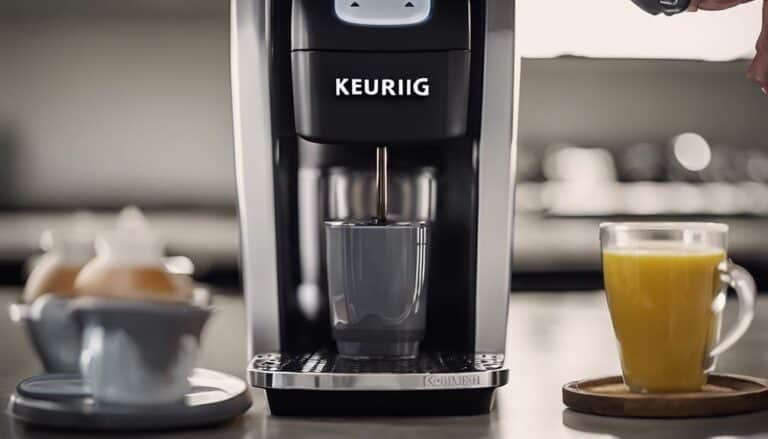
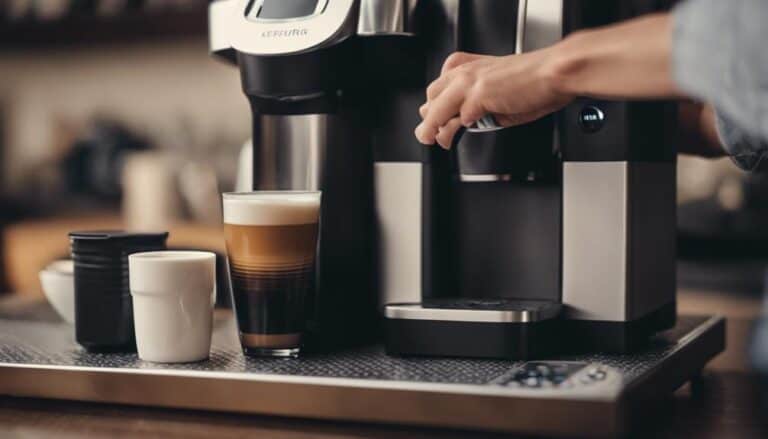
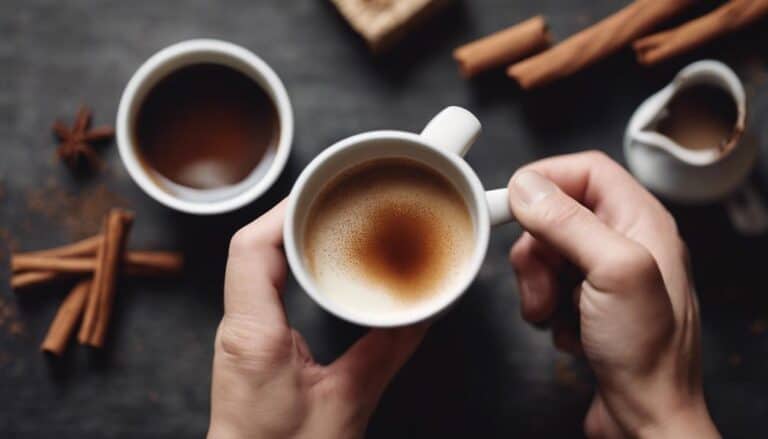

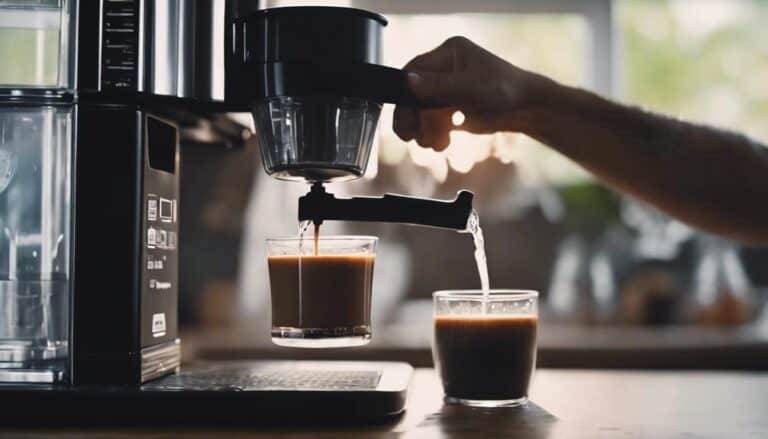
One Comment